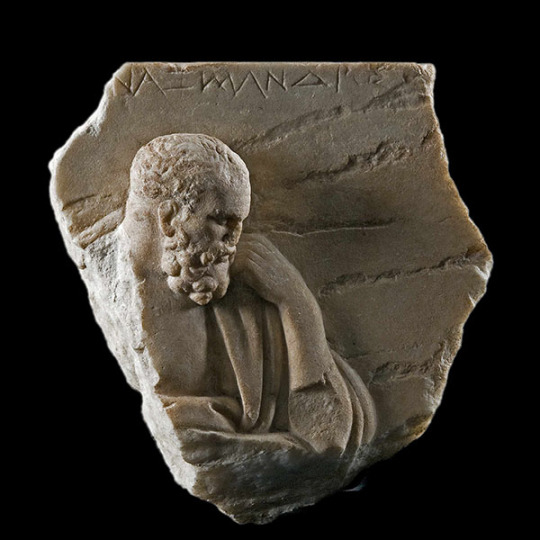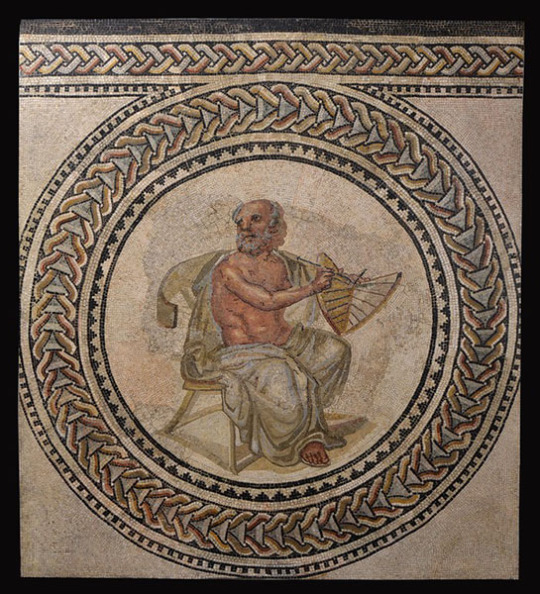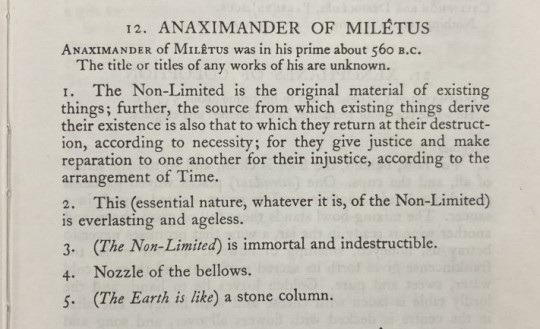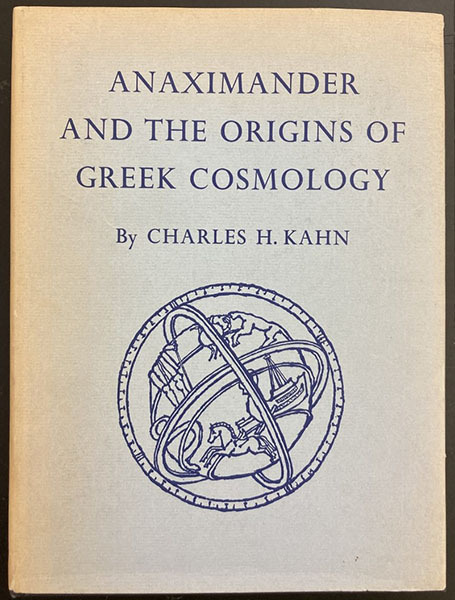#Miletus
Text

Greek theatre of Miletus, Turkey
Turkish vintage postcard
#sepia#turkish#photography#miletus#historic#vintage#postkaart#ansichtskarte#ephemera#carte postale#postcard#greek#postal#briefkaart#theatre#photo#tarjeta#turkey#postkarte
11 notes
·
View notes
Photo





Anaximander of Miletus – Scientist of the Day
Anaximander of Miletus was a pre-Socratic philosopher who lived in Miletus in Ionia, a collection of Greek cities on the western coast of Asa Minor.
read more...
#Anaximander#Miletus#Ionia#pre-Socratic#histsci#histSTM#6th century BCE#history of science#Ashworth#Scientist of the Day
15 notes
·
View notes
Text
Aegean Sailing and More Ancient Sites
We continue our sailing along the Turkish coast. Last night was a full moon, and I figured I didn't have enough zoom on my phone to get a good photo, but I tried anyway. The moon went behind some clouds, and I was pleasantly surprised at the surrealistic image that I got.

Sunrise this morning was outstanding. This is such a great place to be up for sunrise!

I get up around 6:30 for sunrise, they make coffee before 7:30, breakfast at 8, and we are usually off exploring before 9. That's a challenging schedule for Cathie, but I love it.
This portion of the trip is working well for us. I go off to see ancient sites for 4 or 5 hours a day, which is a pretty relaxed schedule for me, and Cathie has been staying on board, relaxing, swimming, napping, and reading. We may have to do more of these trips.
This morning's trip was to ancient Miletus, a major city. We anchored off Didim and took a van from there.

The Miletus Theater is massive.
The lower portion of the theater is Greek and built into the hill in the Greek fashion. However, the Romans increased its size by building higher than the hill.

Like most of these cities, Miletus was built around a port. Actually, four ports surrounded the peninsula it was on. But like most of these cities, the port silted up centuries ago, and now it is surrounded by fields. The surrounding hills are topped with modern windmills, just barely visible in the photo.

The main temple in town was to Apollo, but it was not a substantial structure—just a Tholos (round open temple of columns). Today, all that's left is the foundation, visible in the center of the enclosure.

The front of the local bath is more impressive today.

While it was a major city at one time, it is scattered ruins, olive groves, and cattle today.

Our second visit of the day was to Didyma, the site of a huge temple to Apollo. Most temples were hexastyle, six columns wide, this one is a decastyle, ten columns wide.



Besides having a lot of columns, they are huge.

The temple was about 20km from Miletus and there was a sacred way, used for funeral processions, from the town to the temple.
There was a sacred spring, and it was a sacred site from the 8th century B.C. It was also the site of an oracle. A priest sat above the sacred spring and issued utterances that were interpreted to the person who had submitted the question.
It was destroyed by the Persians in 494 B.C. and remained a ruin until Alexander freed it from the Persians in 334 B.C. The Milesians then began construction of the temple that was one of the largest in the Greek world.
The temple continued in use through the Greek and Roman periods until the coming of Christianity to the area.
Note that while it was a major temple for hundreds of years, it was never entirely finished; this can be seen in that one of the standing columns was never fluted.
The individual elements on the ground make the immense size of the columns more apparent.


The amount of work that it took to build such a temple is astonishing, especially considering that it was all manual. Drums for the columns had to be lifted by a primitive crane taller than the columns. These were usually operated by a large wheel similar to a hamster wheel.
0 notes
Text
ROMAN MARKET GATE OF MILETO - TURKEY
PUERTA ROMANA DEL MERCADO DE MILETO - TURQUÍA
PORTA DEL MERCATO ROMANO DI MILETO - TURCHIA

(English / Español / Italiano)
In ancient times it was located near the mouth of the Meander River, 180 km from the city of Pergamon (Turkey). Miletus was a city of merchants and therefore its market was very important and was located in a square in the center of the city. The Roman style gate was built in 120 A.D. when the Roman Emperor Hadrian ruled and corresponded to the southern entrance of the Market of Miletus. Later, in the 6th century, Emperor Justinian ordered the construction of a city wall around the city of Miletus and the Market Gate was part of the wall. It is one of the best known examples of Roman architectural facades.
Today the Market Gate of Miletus is in the Pergamon Museum, as it appears in the image, in the room dedicated to Roman architecture and is the best preserved piece in the entire museum.
-----------------------------------------------------------------------------
Antiguamente se encontraba cerca de la desembocadura del río Meandro a 180 km de la ciudad de Pérgamo (Turquía). Mileto era una ciudad de comerciantes y por eso su mercado era muy importante y se encontraba en una plaza del centro de la ciudad. La Puerta de estilo romano fue construida en el año 120 d.C. cuando gobernaba el emperador romano Adriano y correspondía a la entrada sur del Mercado de Mileto. Más tarde, en el s.VI, el emperador Justiniano ordenó construir una muralla alrededor de la ciudad de Mileto y la Puerta del Mercado formó parte de la muralla. Es uno de los ejemplos más conocidos de fachadas arquitectónicas romanas.
Hoy en día la Puerta del Mercado de Mileto se encuentra en el Museo de Pérgamo, tal como aparece en la imagen, en la sala dedicada a la arquitectura romana y es la pieza mejor conservada de todo el museo.
-----------------------------------------------------------------------------
Nell'antichità si trovava vicino alla foce del fiume Meandro, a 180 km dalla città di Pergamo (Turchia). Mileto era una città di mercanti e quindi il suo mercato era molto importante e si trovava in una piazza nel centro della città. La porta in stile romano fu costruita nel 120 d.C. durante il regno dell'imperatore romano Adriano e corrispondeva all'ingresso meridionale del mercato di Mileto. Più tardi, nel VI secolo, l'imperatore Giustiniano ordinò la costruzione di una cinta muraria intorno alla città di Mileto, di cui la Porta del Mercato faceva parte. È uno degli esempi più noti di facciata architettonica romana.
Oggi la Porta del Mercato di Mileto si trova nel Museo di Pergamo, come mostra la foto, nella sala dedicata all'architettura romana, ed è il pezzo meglio conservato dell'intero museo.
#ancient rome#roma antigua#antica roma#120 A.D#120d.C.#s. VI#6th century#mileto#pergamo#miletus#pergamon#Emperor Hadrian#imperatore Adriano
1 note
·
View note
Text
Old Songs
Timotheus of Miletus
I won’t sing the old songs any more
because
my new ones are far better.
The new king is
Zeus
and the old one is
Kronos.
His rule is over long ago
and so,
Let me abandon the old
Muse
Leader of men
0 notes
Text

Roman statue of Apollo from Miletus, modern-day Turkey
Miletus is traditionally believed to have been founded by Cretan colonists from Miletos in southwest Anatolia somewhere before 1400 BCE. The site passed into Mycenaean, Carian, and Roman control.
This statue is from the Roman era, dating back to the 2nd century CE when Miletus was a flourishing free city.
Photo source: 🏺
132 notes
·
View notes
Text
Bible Land Tour (Mediterranean)(II)
Neal Pollard
Today, we completed our land tour of Rome. I mentioned that there are 56 of us, ranging in age from teenagers to pushing 80. So, we move different speeds and are in different degrees of health. We are often having to go far and somewhat fast, requiring patience on the part of everyone. It has been pretty hot and sunny all weekend, too! Would you believe that everyone has kept such a…

View On WordPress
0 notes
Text

Athens and Sparta Adventures: Chapter 9: Libation Bearers
[previous] [contents] [next]
Updates Saturdays (ideally) :)
It's been a while! Welcome back to the thirty years of peace (continued...)
Comments:
By the time this is posted, I will be out of town on vacation until the end of the month. I decided to risk posting this even though I only have a few pages ready to roll in order to motivate me to finish the chapter, so I hope you enjoy! Let me know what you like and if you have speculations or questions etc etc, I'm always glad to hear from readers to see if I'm hitting the mark (or if you have interpretations that never even occurred to me)
Since I'm out of town, I apologize if I don't edit the "previous" / "next" page links in a timely manner. If I haven't done this by October, definitely bug me about it :)
#aasacomic#aasachp9#hws oc#ancientalia#aph oc#aasa ionia#aasa miletus#aasa megara#hapo art#digital art#clip studio paint#historical hetalia#athens and sparta adventures
29 notes
·
View notes
Text

For your consideration:
King Memnon of Ethiopia
A descendant of Priam, he came to Troy's aid in the mythological Trojan War. He killed Antilochus, son of Nestor, and was himself later killed by Achilles on the behest of Nestor.
A story of Bronze Age Greece (approx 1750 – c. 1050 BC), scholars estimate the war in the legend took place about 1250 BCE. The legend was later captured by Homer around 750 BCE.
Memnon does not appear in Homer's famous The Iliad, but in another book of The Epic Cycle, The Aethiopis. This book follows The Iliad and captures the events following Hector's funeral up to Achilles' death.
Vase painting dated 460-440 BCE.
Conclusion
Africans were living in Bronze Age Greece and Classical Greece. In fact, they were common enough for at least one to be a major character in one of the most famous myths. A myth so famous that we still read and study it in 2024 CE!
If one of the main characters in The Iliad can be African, I think Diomedes and Patroclus can be African too.
#tagamemnon#The Iliad#Black Patroclus#Black Diomedes#King Memnon#the Aethiopis#Arctinus of Miletus#The Aithiopis#Greek Mythology#Black Greeks#Homer#Classical mythology#Trojan War#Epic Cycle
33 notes
·
View notes
Photo

Disappearance of Miletus Bay
Once a bustling trade node, Miletus Bay slowly disappeared under alluvium silt deposits flowing in through the Maeander River. The planned city Priene, which had been founded originally in around 350 BCE, already stopped being a harbour city in the 1st century BCE. The eponymous city Miletus lost it's harbour some time during the 3rd century CE. Both cities would be abandoned as their economic base fell away.
Source: https://en.wikipedia.org/wiki/Priene
130 notes
·
View notes
Text

Nikos Engonopoulos (1907-1985) — Anthemius of Tralles and Isidore of Miletus [oil on canvas, 1970]
60 notes
·
View notes
Text

World Watercolour Month: 16. Fiber
ok maybe she doesn't look like she's having a great time, but i swear she's in the zone
#worldwatercolourmonth#worldwatercolormonth#world watercolour month#world watercolor month#mixed media#watercolour#pencil crayon#traditional art#hapo art#athens and sparta adventures#aasa miletus#aasa ionia#aasa illustration
7 notes
·
View notes
Text
"Circa 350 BCE

A papyrus fragment of The Persae by the Greek musician and dithyrambic poet, Timotheus (Timotheos) of Miletus, discovered in Abusir, Egypt, is probably the earliest surviving papyrus of a Greek text found in Egypt. It is preserved in the Staatliches Museum, Berlin (P. Berol. 9875).
The text was first edited and published by Ulrich von Wilamowitz-Möllendorff as Timotheos, Die Perser, aus einem Papyrus von Abusir im Aufrage der deutschen Orientgesellschaft (1903).
Morison, Politics and Script. . . . Barker ed. (1972) 11, pl. 8 describes the Greek writing on the papyrus as "Formal book-script; square; monoline; unserifed."
Timotheus of Miletus was ancient Greek musician and dithyrambic poet (ca 446-357 BCE).
It is accepted that this papyrus fragment dates from ca 350 BCE, before the conquest of Egypt by Alexander. It is perhaps the most ancient extant legible remain of an ancient Greek book (books had during the Classical period as material papyrus and were in the form of scroll- or roll, as historians of Classical Antiquity prefer to call it).
#ancient greek literature#ancient greek paleography#timotheus of miletus#persae of timotheus#papyrus
24 notes
·
View notes
Text
philosophy is so fucking funny, like you go all the way back to the ionian school of pre-socratic philosophy and its like everyone is out here changing up what they believe the world arises from.
Thales of Miletus believed all things are derived from water because of moistness.
Anaximenes believed everything is derived from air.
Heraclitus believed all things are derived from fire.
straight up just like switching out what came before.
(lmao i know it’s more complicated than that and they had solid reasoning, but it’s funnier to think about them just like being like “fuck you philosophy father!! the archae is this!!!”)
i love philosophy so much lmao.
#archae#philosophy#philosophy guy loves giraffes in my podcast#anaximander#Anaximenes#heraclitus#thales of miletus#socrates#pre-socratic#ionia#water womb
14 notes
·
View notes
Text

Today's Flickr photo with the most hits: this pedestal inscription, in Greek. Theatre of Miletus.
0 notes
Text

05.22.2023 | Athens
Captured on Xbox Series X.
#aspasia#aspasia of miletus#discovery tour ancient greece#assassin's creed odyssey#ac odyssey#assassin's creed#ac photo mode#virtual photography#xbox series x#xbox share#ubisoft quebec#ubisoft
21 notes
·
View notes